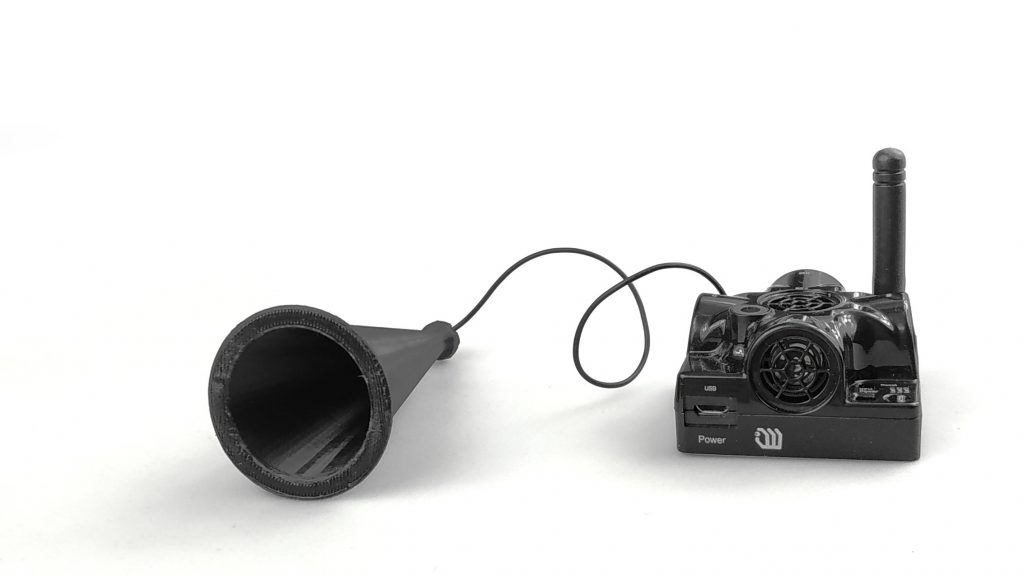What is the range?
To know what is the range of the indoor positioning system is one of the most fundamental question. But such a simple question has multiple answers depending on what exactly is asked. Let’s dig a bit deeper.
Very quick summary
- There are many “ranges”: ultrasound, radio, WiFi; submap, map, super-map “ranges”
- Typical 30-meter ultrasound range in a single 2D/3D submap
- Typical ultrasound range of a 1D submap ~100 m
- “Range” of a map is limited by radio coverage and is typically ~100-400 m
- “Range” of a super-mop is practically unlimited
Two "ranges": ultrasound and radio
Before we go even deeper, it shall be clearly understood that our system is using two fundamental technologies:
- Ultrasound time-of-flight to precisely measure the distance and multilateration to calculate the position
- Radio for precise (micro-second level) time synchronization, data exchange, telemetry
Why range in quotation marks? – because it is not an entirely correct question still.
"Range" in submap vs. "range" in map?
Since our system uses submaps, the range of the map can be anything in terms of ultrasound coverage. Submaps ≈ cells.
Think about our system in terms of cellular networks: your cellular network’s cell can be from a tiny 50-meter or so picocell to a large tens of kilometers macrocell – depending on the band, base station, height of the antennas, environment, surroundings, etc. What is the “range” of the cellular network? – it can be virtually anything, depending on the number of cells and their coverage. The same is with our system. The “range” of the map in terms of ultrasound can be anything. If you want to cover the whole underground country, it is possible.
Therefore, normally, when we talk about the range, we talk about the range within a submap for ultrasound.
However, for radio, we talk about the range in terms of the map because the modem controls all beacons within its radio range since the system works in a star architecture. And on the opposite. If the modem cannot reach the beacon over the radio, it cannot control it. The radio range of the modem-beacon link limits the size of a map. Thus, if you want to increase the radio range of the system, you need to first improve your modem’s antenna. Thus, you will increase the range toward all beacons.
In order to have networks of practically unlimited size, we use super-mops. They are the maps of maps. Super-Modems of each map are controlled by a super-super-modem of a super-map via a backbone that can rely on multiple physical interfaces from 4G/5G to WiFi and even RS485. See more in the Multi-Modem Architecture.
What is the ultrasound range, then?...
- 1D, 2D, 3D?
- External noise conditions, particularly in ultrasound?
Typical ultrasound ranges
- Recommended radius of coverage for a Super-Beacon or Industrial Super-Beacon – up to 30 meters
- Typical 1D range with Super-Beacons face-to-face in lab (noiseless) conditions – >50 meters
- Horn range (1D) recommended – up to 60 meters. In a lab-like environment – up to 120-150 meters
Ultrasound range always assumes a clear line of sight. Read more: Line of sight is a must for precise indoor positioning systems.
Since ultrasound attenuates differently in the air depending on the frequency, and we use a wide range of ultrasound from 19kHz to 45kHz, if you need the largest ultrasound range, use the lowest frequencies: 19-25kHz. However, these frequencies are the closest to the audible range of noise. Thus, there is an optimal frequency for the highest signal-to-noise ratio.
Typically, for the longest range, we recommend the 25-kHz beacons. However, if you don’t have a strong external noise or use the Horn that effectively shields the external noise, the 19-kHz beacons may show even better results.
Typical radio range
- Modem with a default 50-mm antenna and Mini-RX or Mini-TX with ceramic antenna – 50-100 meters
- Modem with a default 50-mm antenna and Super-Beacon with a default antenna – ~100m
- Modem/Super-Modem and Super-Beacon, both with Full-Size Antennas – ~400m
- Modem/Super-Modem with Yagi-7 antenna to Super-Beacons with Full-Size Antenna – >1km
- Modem/Super-Modem with Yagi-7 antenna to Super-Beacons with Yagi-7 – up to 3-4km (theoretically)
Radio range ≠ WiFi range
Summary
Such a simple question about the range of Marvelmind Indoor Positioning System has so many answers depending on what exactly is asked and that is even without digging too deep in the subject.
| M | T | W | T | F | S | S |
|---|---|---|---|---|---|---|
| 1 | 2 | 3 | 4 | 5 | 6 | 7 |
| 8 | 9 | 10 | 11 | 12 | 13 | 14 |
| 15 | 16 | 17 | 18 | 19 | 20 | 21 |
| 22 | 23 | 24 | 25 | 26 | 27 | 28 |
| 29 | 30 | 31 | ||||

